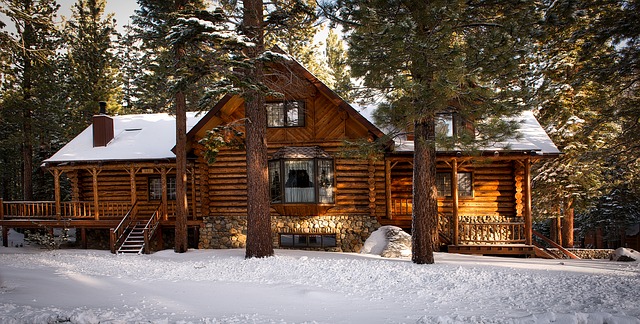6 Ways to Winterize Your Home: Avoid the Risks Which Lead to Property Damage in Winter
Image by David Mark from Pixabay
The winter months bring unique challenges to property owners, and winter weather insurance claims account for over half of homeowner insurance claims. Harsh weather and frigid temperatures have the potential to damage homes, but proper winterizing and preventive measures can mean the difference between a well-insulated, sturdy structure and winter inconveniences that result in big repair bills. With the integrity of your property on the line, advice from the experts is the best way to move forward.
The professionals at the nationally recognized restoration group, BluSky Restoration Contractors, are no strangers to the perils of winter weather. “Homes endure many external factors during winter,” says a representative for the company. “Proper precautions keep the cold safely outside and prevent winter disasters that can strike at the worst time.”
Inspecting your property with an expert eye can identify weak and exposed spaces that could lead to winter weather repairs. Here are six areas in your home that require particular attention to avoid the risks which lead to winter property damage.
1. Roofing and Gutters
The roof of a home is the first point of contact for wet or windy weather, and it protects your building from moisture, leaks, and the outside elements. By inspecting the roof yearly, any necessary repairs can be made to vents, flashing, and shingles that, if left damaged, could allow water into the building. Autumn leaves accumulate in gutters, catching other debris and clogging the established flow of water away from the roof. When ice comes, it can dam and keep water close to the house and roof. As an added danger, icicles can form and pose a hazard to those who walk under them. Equip gutters with guards, when possible, to eliminate the buildup of debris.
2. Water Heaters & Furnaces
Sediment collects in the base of your water heater and can make it less efficient in the winter months. By flushing the water through the drain valve at the bottom of your water heater, much of the sediment will be released, and the integrity and efficiency of your unit will remain intact. Furnaces should be inspected regularly and kept in good repair. A well-working heating source is vital as winter months approach. When using a wood-burning stove, chimneys and other heat-source ventilation should be checked to ensure there are no blockages that could lead to fire or the buildup of gas and smoke in your home.
3. Outdoor Water Sources
Outdoor water faucets should be closed at the shutoff valve and drained to avoid any damage from expanding ice. Hoses are best kept stored once the weather freezes. Homeowners often overlook the importance of outdoor water sources and forego proper winterization including detaching hoses from outdoor spigots, an oversight that can cause hefty water damage or gradual leaks that lead to unnecessary headaches.
4. Windows & Doors
Windows become an escape route for heat and diminish energy efficiency when they are not properly prepared for winter. Caulk and weather stripping will seal any cracks or gaps around windows and doors. Covering windows with plastic film adds another protective layer to maintain warmth in your home. The use of proper storm windows and doors has the potential to improve energy efficiency up to 45%.
5. Pipes
The damage caused by frozen pipes is rarely minor, and airy spaces such as attics, basements and crawl spaces can leave pipes exposed to cold temperatures spelling disaster when the cold weather comes. If a pipe is located in a vented area or exposed externally, the chance for freezing increases, and the need for intervention is a necessity. When temperatures plummet, running a consistent stream of water will keep enough flow to prevent the possibility of major freezing. Plumbing systems can be equipped with an emergency release valve that protects against the increased pressure of freezing pipes.
6. Outdoor Walkways and Fixtures
The dangers of an icy drive can mean more than damage to property; they can lead to personal injury as well. Ensuring sidewalks, driveways, steps, and other walkways are clear of snow and properly salted to melt ice is a task that must be performed regularly throughout the winter. Keeping ice-melting salt and a shovel handy near walkways makes the process more convenient. Ensuring steps and handrails remain in good repair provides a further layer of prevention against slips and falls in icy weather.
Prepare and Preserve Your Property
A simple plan for winter disaster prevention can save homeowners hundreds to thousands of dollars in property damage. Know who you’ll call in case of an emergency such as frozen pipes or leaking roof. Keep those contact numbers in an easily accessible place for emergent situations. The risk of fire increases in the winter months and during hurricane season, so keeping smoke and carbon monoxide detectors in working order is a lifesaving measure that should never be overlooked.
Often, it’s the cycle of freeze and thaw that causes the most heartache for property owners. When low, low temperatures are followed by weather in the 50s, the draining path of snow as it melts can lead to water pooling around the property. In a similar manner, standing ice leads to water pooling on or close to the structure, which can also cause extensive damage. The best plans for protecting your property include preparation, vigilance, and a response plan in the event of a property disaster.

